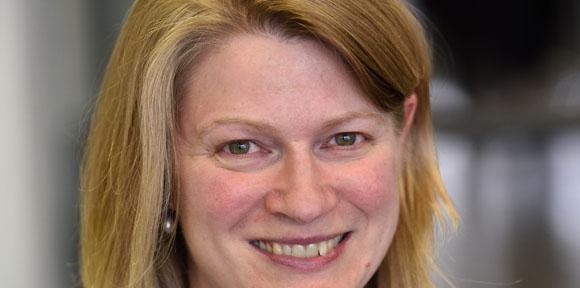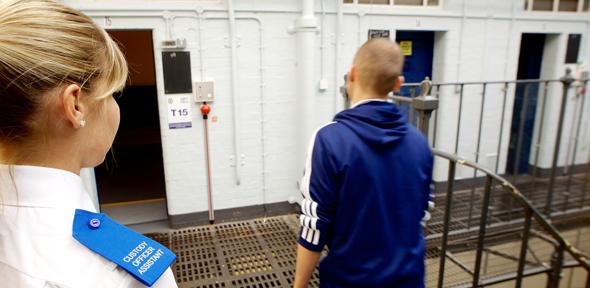The visit to Cambridge was part of a trip to the United Kingdom organised by the Foreign and Commonwealth Office, which aims to provide a platform for the young Indian political leaders to learn about the UK’s political landscape and the wider UK-India relationship.
Having spent a few days in London –including sitting through a Prime Minister’s Question Time session—the group arrived in Cambridge to visit the University’s Centre of South Asian Studies and to meet with various student society representatives.
At the Centre of South Asian studies, the delegation was welcomed by Dr David Washbrook, Senior Research Fellow at Trinity College, who offered an overview of the University’s historical links to India.
Professor Polly O’Hanlon, a fellow of Clare College, explained how British scholarship about India evolved in the second half of the 20th century, leading to the creation in 1964 of the Centre of South Asian Studies –the first of its kind in the UK.
Dr Edward Anderson, Smuts Research Fellow in Commonwealth Studies, gave an overview of the Centre’s work, its library and archives, and its MPhil in Modern South Asian Studies.
After meeting MPhil students, the delegation was taken into the Centre of South Asian Studies’ library, where Kevin Greenbank, the Centre’s Archivist, displayed many of the Archives’ treasures. These included a panoramic photograph from the Delhi Durbar of 1911, Edwin Lutyens’ plans for New Delhi (including many for buildings that were never built) and miniature paintings from 1842.
Commenting on the visit, Dr Anderson said: "Cambridge has an extremely rich and diverse history of connections with India – a relationship that is today as important as ever. The visiting students seemed to really enjoy hearing about this shared heritage, and our students from the MPhil in Modern South Asian Studies were also able to learn a lot from the young Indian politicians".
Explaining the motivation behind the visit, Shria Gandhi, Political Officer at the UK’s High Commission in Delhi, said:
“This group represents 6 political parties across 10 Indian states. They are the next generation of Indian leaders. The idea is to expose them to UK institutions –its Parliament, businesses, media, higher education institutions—so that 15 or 20 years down the line, when they are members of parliament or ministers in the Indian government, they will want to collaborate with the UK. The idea is to promote the UK-India bilateral relation, and who better than future leaders of India as ambassadors to promote that relationship?”
Ronak Hegde, 29, from Maharashtra, and a member of the youth wing of the ruling Bharatiya Janata Party (BJP), shared his impressions of the Centre of South Asian Studies: “I am always curious to know about my past history. If anyone gives me new insights into my own background I am always grateful.”
This sentiment was echoed by Richa Singh, 29, the first elected woman President in the 128-year history of the Allahabad University Students’ Union, and a member of the Samajwadi (Socialist) Party: “Cambridge is a very important place for us, and the Centre of South Asian Studies gives us a deeper understanding of India and its relations to the UK.”
Hasiba Amin, 26, General Secretary of the National Students’ Union of India (NSUI), the student wing of the Congress Party, explained the importance of visiting Cambridge.
Referring to India’s first Prime Minister, Jawaharlal Nehru, she said: “I am a big Nehru fan, and Cambridge played a role in making Nehru what he was. He chose democracy. He understood the importance of criticism. Cambridge had a role to play in that.”
Leni Jadhav, 30, also a General Secretary of the NSUI, added: “We know some of the Cambridge colleges from Bollywood films, and what I’ve seen is just as beautiful. But I was very pleased to have met people who are interested in topics that are of great interest to me as an Indian. Now I’m keen to meet students, and learn about what they do, about their sports activities, about their cultural life –the things the students here do apart from studying.”
Cambridge’s track record in research and innovation was the biggest draw for Alok Kumar Singh, 28, president of the Akhil Bharatiya Vidyarthi Parishad (ABVP), the student wing of the Rashtriya Swayamsevak Sangh party:
“I’m a biochemist, and I admire Cambridge because of the work of Nobel winner Venkatraman Ramakrishnan. Some of the greatest recent discoveries in molecular biology have happened in this university.”
A fellow member of the ABVP, 20-year-old Harikrishna Varma explained that he was most interested in understanding the difference between student politics in both countries:
“I want to know how political dynamics play out in University life. The way they work here seems to be better for academic life. In Indian party politics there is more rhetoric and less detail. Here there is more space for nuanced opinions.”
Abhishek Gupta, 23, of the student wing of the Aam Aadmi Party, said: “When you hear the name of Cambridge, you think about very high levels in education. We know of the high standards of education set by Cambridge, and we need more universities like this in India.”
The University of Cambridge has enjoyed a close relationship with India for over 150 years. From the mid-19th century, when the first students from India arrived in Cambridge, scholarship and lasting friendship have been the foundation of academic partnership. Three Indian Prime Ministers were educated at Cambridge, and the University is now home to distinguished academics from India across all fields of the arts, humanities, social, physical, biological and medical sciences.
In March 2017, to mark the anniversary of India’s independence, the University of Cambridge’s museums will launch a year-long programme of India-focused exhibitions and events.
































